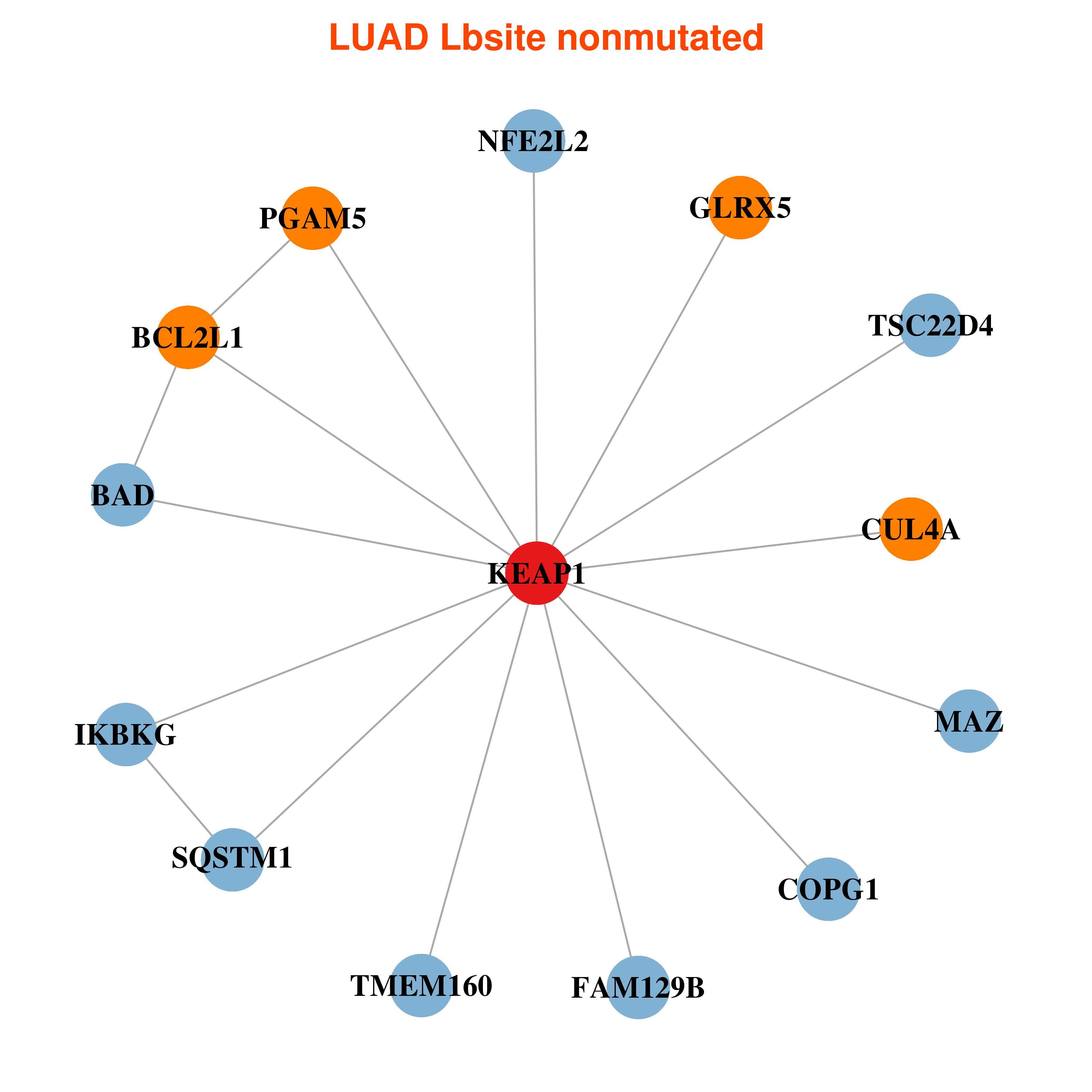|
mutLBSgeneDB |
| |
| |
| |
| |
| |
| |
|
| Gene summary for KEAP1 |
 Gene summary Gene summary |
| Basic gene Info. | Gene symbol | KEAP1 |
| Gene name | kelch-like ECH-associated protein 1 | |
| Synonyms | INrf2|KLHL19 | |
| Cytomap | UCSC genome browser: 19p13.2 | |
| Type of gene | protein-coding | |
| RefGenes | NM_012289.3, NM_203500.1, | |
| Description | cytosolic inhibitor of Nrf2kelch-like family member 19kelch-like protein 19 | |
| Modification date | 20141207 | |
| dbXrefs | MIM : 606016 | |
| HGNC : HGNC | ||
| Ensembl : ENSG00000079999 | ||
| HPRD : 12079 | ||
| Vega : OTTHUMG00000180579 | ||
| Protein | UniProt: Q14145 go to UniProt's Cross Reference DB Table | |
| Expression | CleanEX: HS_KEAP1 | |
| BioGPS: 9817 | ||
| Pathway | NCI Pathway Interaction Database: KEAP1 | |
| KEGG: KEAP1 | ||
| REACTOME: KEAP1 | ||
| Pathway Commons: KEAP1 | ||
| Context | iHOP: KEAP1 | |
| ligand binding site mutation search in PubMed: KEAP1 | ||
| UCL Cancer Institute: KEAP1 | ||
| Assigned class in mutLBSgeneDB | B: This gene belongs to targetable_mutLBSgenes. | |
 Gene ontology having evidence of Inferred from Direct Assay (IDA) from Entrez Gene ontology having evidence of Inferred from Direct Assay (IDA) from Entrez |
| GO ID | GO Term | PubMed ID | GO:0010499 | proteasomal ubiquitin-independent protein catabolic process | 15983046 | GO:0016567 | protein ubiquitination | 15983046 |
| Top |
| Ligand binding site mutations for KEAP1 |
 Lollipop-style diagram of mutations at LBS in amino-acid sequence. Lollipop-style diagram of mutations at LBS in amino-acid sequence. We represented ligand binding site mutations only. (You can see big image via clicking.) |
 |
 Cancer type specific mutLBS sorted by frequency Cancer type specific mutLBS sorted by frequency |
| LBS | AAchange of nsSNV | Cancer type | # samples | H154 | V155F | LUSC | 2 | F478 | G480W | LUSC | 2 | Y525 | G524C | LUAD | 1 | F478 | D479G | LUAD | 1 | G462 | R460G | LUAD | 1 | R415 | R415H | LUAD | 1 | H154 | M156V | LUAD | 1 | Y334 | G332C | LUAD | 1 | H154 | V155A | LUAD | 1 | Y334 | G333S | LUAD | 1 | I416 | G417R | LUAD | 1 | G509 | G509W | LUAD | 1 | I416 | G417E | LUAD | 1 | R483 | R483C | LUAD | 1 | S602 | G603W | LUAD | 1 | R415 | R415C | LUAD | 1 | G462 | I461V | LUAD | 1 | F478 | G480W | LUAD | 1 | Y334 | G333C | LUAD | 1 | S555 | R554Q | LUAD | 1 | S508 | I506V | LUSC | 1 | I416 | V418L | LUSC | 1 | H129,K131 | P130L | SKCM | 1 | R483 | R483H | STAD | 1 | F478 | G477S | THCA | 1 |
| cf) Cancer type abbreviation. BLCA: Bladder urothelial carcinoma, BRCA: Breast invasive carcinoma, CESC: Cervical squamous cell carcinoma and endocervical adenocarcinoma, COAD: Colon adenocarcinoma, GBM: Glioblastoma multiforme, LGG: Brain lower grade glioma, HNSC: Head and neck squamous cell carcinoma, KICH: Kidney chromophobe, KIRC: Kidney renal clear cell carcinoma, KIRP: Kidney renal papillary cell carcinoma, LAML: Acute myeloid leukemia, LUAD: Lung adenocarcinoma, LUSC: Lung squamous cell carcinoma, OV: Ovarian serous cystadenocarcinoma, PAAD: Pancreatic adenocarcinoma, PRAD: Prostate adenocarcinoma, SKCM: Skin cutaneous melanoma, STAD: Stomach adenocarcinoma, THCA: Thyroid carcinoma, UCEC: Uterine corpus endometrial carcinoma. |
 Clinical information for KEAP1 from My Cancer Genome. Clinical information for KEAP1 from My Cancer Genome. |
| Kelch-like ECH-associated protein 1 (KEAP1) is a gene that encodes a protein that functions in the transportation of NF-E2-related factor 2 to the nucleus of a cell. Missense mutations, nonsense mutations, silent mutations, frameshift deletions and insertions, and in-frame deletions are observed in cancers such as intestinal cancer, lung cancer, and stomach cancer. Modified: July 1, 2015 |
| Top |
| Protein structure related information for KEAP1 |
 Protein structure of wild type (WT) and mutant type (MT) of KEAP1 Protein structure of wild type (WT) and mutant type (MT) of KEAP1 |
| Wild type KEAP1 |
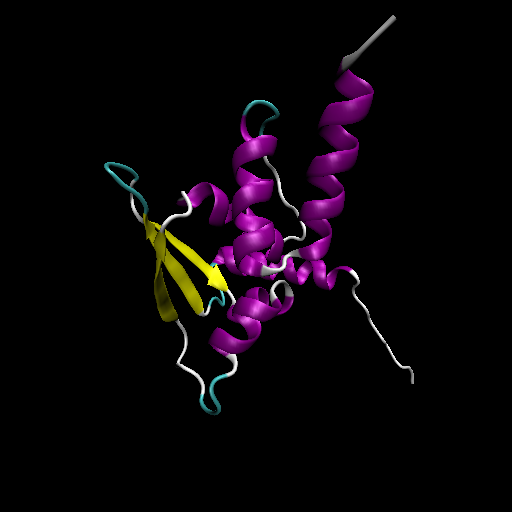 |
| Mutant type KEAP1 |
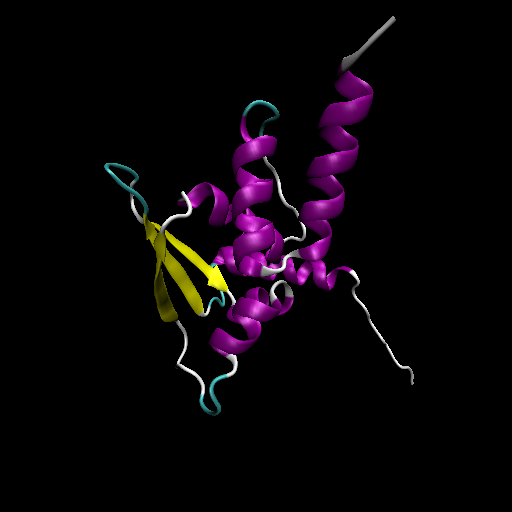 |
 Free energy of binding of drugs to wild type and mutant tpye of KEAP1 Free energy of binding of drugs to wild type and mutant tpye of KEAP1 |
| Gene symbol | Drug name | Free energy of binding (kcal/mol) of wild type | Free energy of binding (kcal/mol) of mutant type | KEAP1 | Dimethyl fumarate | -4 | -3.7 |
 Relative protein structure stability change (ΔΔE) using Mupro 1.1 Relative protein structure stability change (ΔΔE) using Mupro 1.1 Mupro score denotes assessment of the effect of mutations on thermodynamic stability. (ΔΔE<0: mutation decreases stability, ΔΔE>0: mutation increases stability) |
 : nsSNV at non-LBS : nsSNV at non-LBS : nsSNV at LBS : nsSNV at LBS |
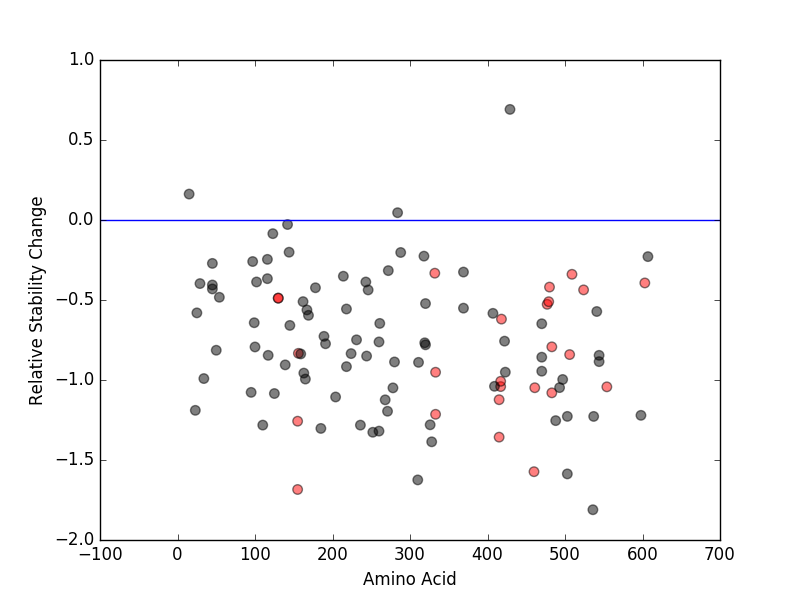 |
 nsSNVs sorted by the relative stability change of protein structure by each mutation nsSNVs sorted by the relative stability change of protein structure by each mutation Blue: mutations of positive stability change. and red : the most recurrent mutation for this gene. |
| LBS | AAchange of nsSNV | Relative stability change | H154 | V155A | -1.6842836 | G462 | R460G | -1.573034 | R415 | R415H | -1.3571626 | H154 | V155F | -1.2574914 | Y334 | G333S | -1.2143485 | R415 | R415C | -1.123124 | R483 | R483H | -1.0802491 | G462 | I461V | -1.0482987 | S555 | R554Q | -1.0427242 | I416 | G417R | -1.041171 | I416 | G417E | -1.0081143 | Y334 | G333C | -0.95144109 | S508 | I506V | -0.84109019 | H154 | M156V | -0.83323599 | R483 | R483C | -0.79272534 | I416 | V418L | -0.61940537 | F478 | G477S | -0.52697565 | F478 | D479G | -0.5106473 | K131 | P130L | -0.48841152 | H129 | P130L | -0.48841152 | Y525 | G524C | -0.4367942 | F478 | G480W | -0.41924618 | S602 | G603W | -0.39342283 | G509 | G509W | -0.33937524 | Y334 | G332C | -0.33239828 |
| (MuPro1.1: Jianlin Cheng et al., Prediction of Protein Stability Changes for Single-Site Mutations Using Support Vector Machines, PROTEINS: Structure, Function, and Bioinformatics. 2006, 62:1125-1132) |
 Structure image for KEAP1 from PDB Structure image for KEAP1 from PDB |
| PDB ID | PDB title | PDB structure | 4ZY3 | Crystal Structure of Keap1 in Complex with a small chemical compound, K67 |  |
| Top |
| Differential gene expression and gene-gene network for KEAP1 |
 Differential gene expression between mutated and non-mutated LBS samples in all 16 major cancer types Differential gene expression between mutated and non-mutated LBS samples in all 16 major cancer types |
| KEAP1_LUAD_DE |
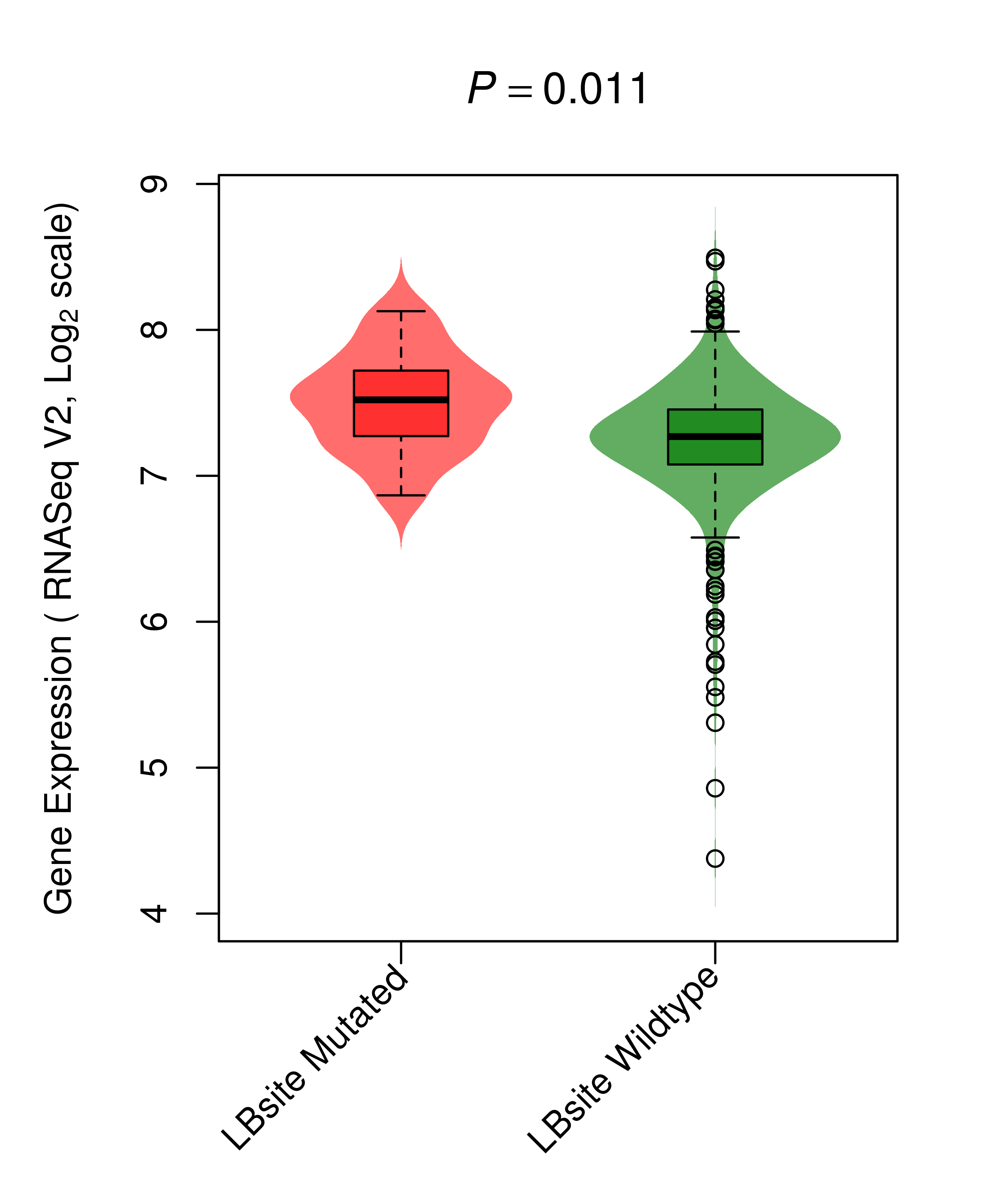 |
 Differential co-expressed gene network based on protein-protein interaction data (CePIN) Differential co-expressed gene network based on protein-protein interaction data (CePIN) |
| * In LUAD | |
 |
|
| Top |
| Top |
| Phenotype information for KEAP1 |
 Gene level disease information (DisGeNet) Gene level disease information (DisGeNet) |
| Disease ID | Disease name | # PubMed | Association type |
| umls:C0007131 | Carcinoma, Non-Small-Cell Lung | 13 | Biomarker |
| umls:C0016978 | Gallbladder Neoplasms | 1 | Biomarker, GeneticVariation |
| umls:C0007134 | Carcinoma, Renal Cell | 1 | Biomarker |
| umls:C0242656 | Disease Progression | 1 | Biomarker |
| umls:C0017178 | Gastrointestinal Diseases | 1 | Biomarker |
| umls:C0019158 | Hepatitis | 1 | Biomarker |
| umls:C0022593 | Keratosis | 1 | Biomarker |
 Mutation level pathogenic information (ClinVar annotation) Mutation level pathogenic information (ClinVar annotation) |
| Allele ID | AA change | Clinical significance | Origin | Phenotype IDs |
| Top |
| Pharmacological information for KEAP1 |
 Gene expression profile of anticancer drug treated cell-lines (CCLE) Gene expression profile of anticancer drug treated cell-lines (CCLE)Heatmap showing the correlation between gene expression and drug response across all the cell-lines. We chose the top 20 among 138 drugs.We used Pearson's correlation coefficient. |
 |
 Gene-centered drug-gene interaction network Gene-centered drug-gene interaction network |
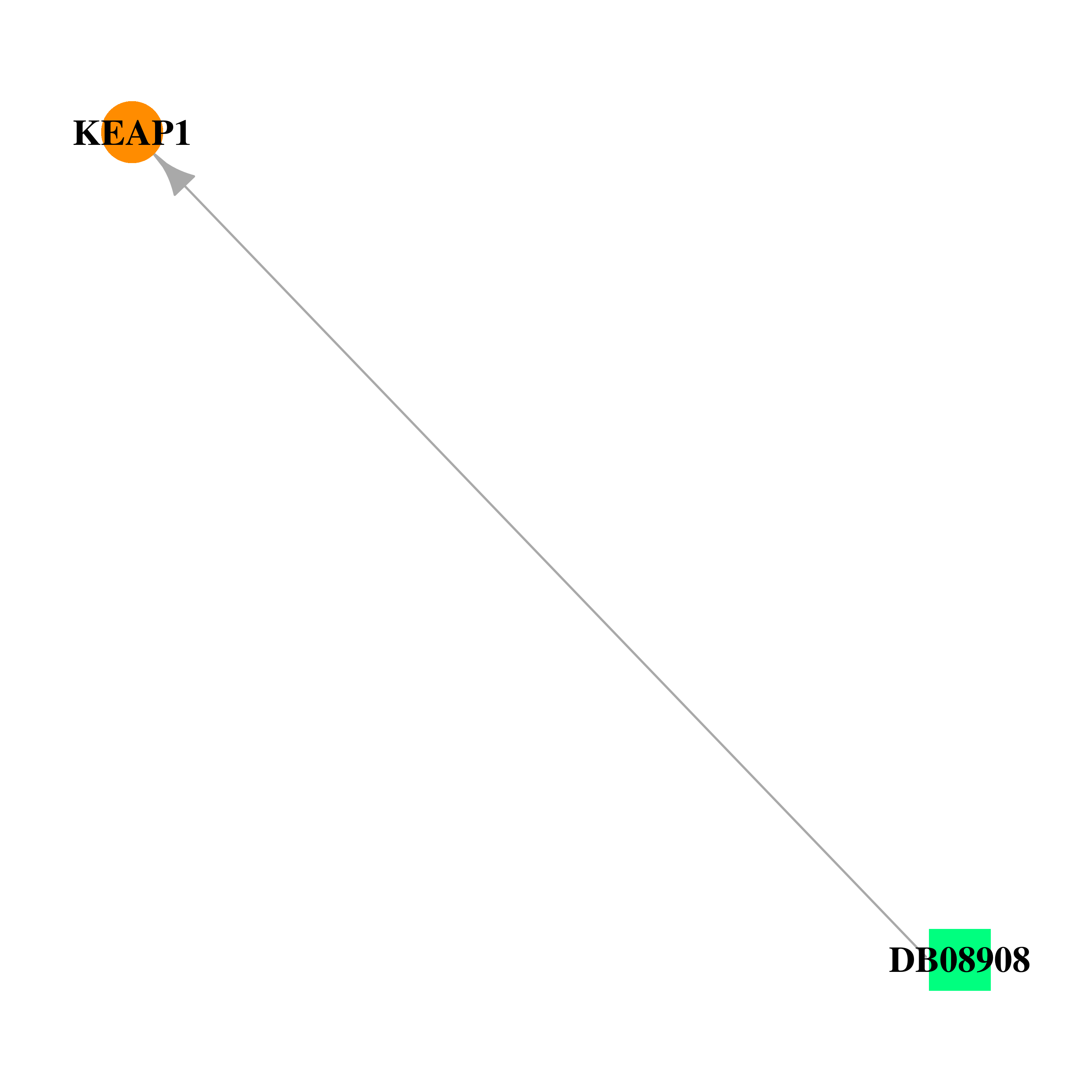 |
 Drug information targeting mutLBSgene (Approved drugs only) Drug information targeting mutLBSgene (Approved drugs only) |
| Drug status | DrugBank ID | Name | Type | Drug structure |
| Approved|investigational | DB08908 | Dimethyl fumarate | Small molecule | 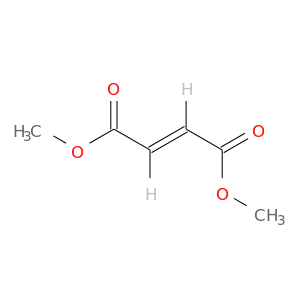 |
 Gene-centered ligand-gene interaction network Gene-centered ligand-gene interaction network |
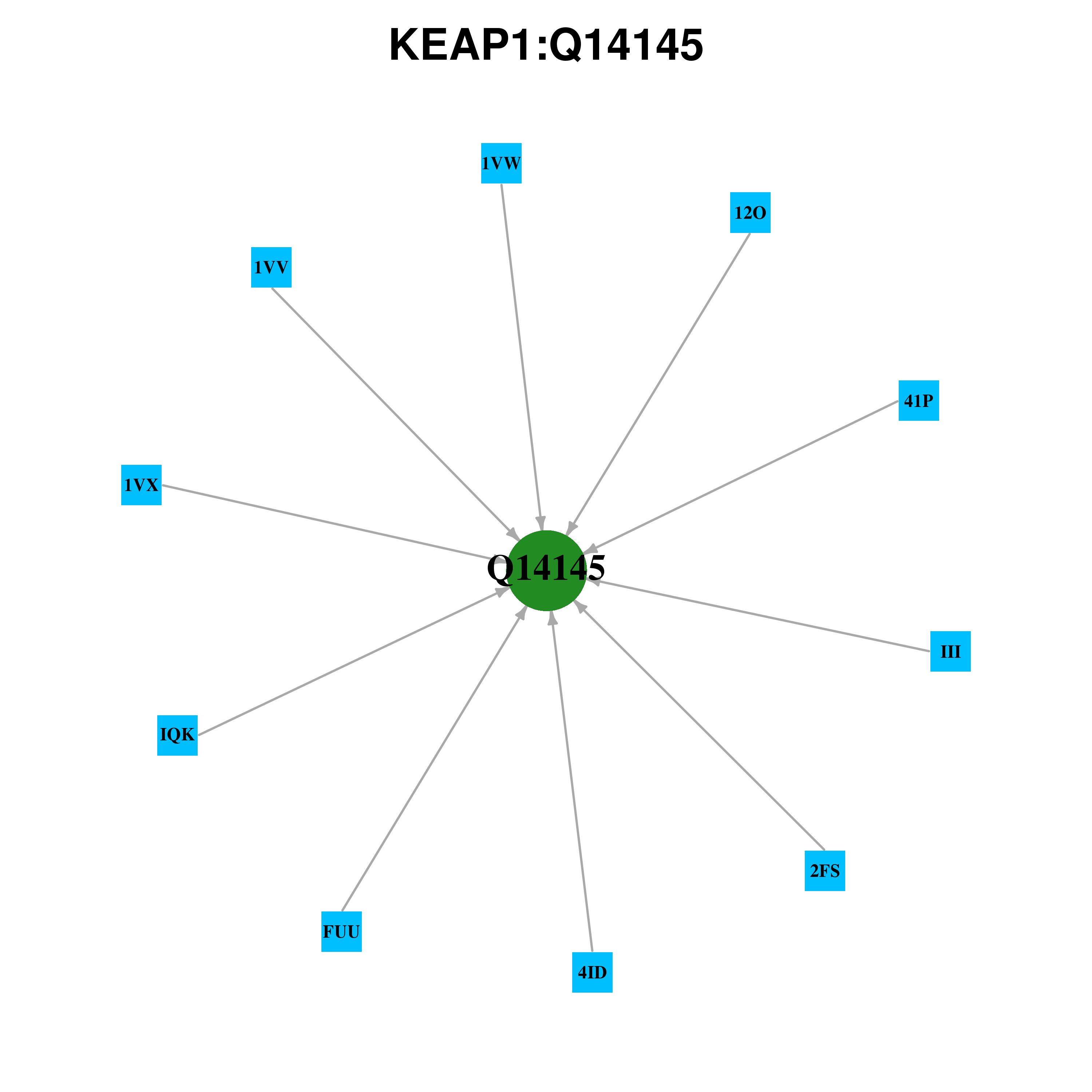 |
 Ligands binding to mutated ligand binding site of KEAP1 go to BioLip Ligands binding to mutated ligand binding site of KEAP1 go to BioLip |
| Ligand ID | Ligand short name | Ligand long name | PDB ID | PDB name | mutLBS | SXJ | (13ALPHA,18ALPHA)-2-CYANO-3-HYDROXY-12- OXOOLEANA-2,9(11)-DIEN-28-OIC ACID | 4cxt | A | H129 K131 H154 | 4ID | 2-({5-[(2,4-DIMETHYLPHENYL)SULFONYL]-6-OXO-1,6- DIHYDROPYRIMIDIN-2-YL}SULFANYL)-N-[2- (TRIFLUOROMETHYL)PHENYL]ACETAMIDE | 4in4 | A | R415 F478 R483 S508 Y525 S555 | 4ID | 2-({5-[(2,4-DIMETHYLPHENYL)SULFONYL]-6-OXO-1,6- DIHYDROPYRIMIDIN-2-YL}SULFANYL)-N-[2- (TRIFLUOROMETHYL)PHENYL]ACETAMIDE | 4in4 | B | R415 F478 R483 S508 Y525 S555 | 4ID | 2-({5-[(2,4-DIMETHYLPHENYL)SULFONYL]-6-OXO-1,6- DIHYDROPYRIMIDIN-2-YL}SULFANYL)-N-[2- (TRIFLUOROMETHYL)PHENYL]ACETAMIDE | 4in4 | C | R415 F478 R483 S508 Y525 S555 | 41P | 2,2'-(NAPHTHALENE-1,4-DIYLBIS(((4-METHOXYPHENYL) SULFONYL)AZANEDIYL))DIACETAMIDE | 4xmb | A | Y334 R415 G462 F478 S508 G509 Y525 S555 S602 | 1VX | (1S,2R)-2-{[(1S)-5-METHYL-1-[(1-OXO-1,3-DIHYDRO-2H- ISOINDOL-2-YL)METHYL]-3,4-DIHYDROISOQUINOLIN-2(1H)- YL]CARBONYL}CYCLOHEXANECARBOXYLIC ACID | 4l7d | A | Y334 R415 G462 G509 S602 | 4ID | 2-({5-[(2,4-DIMETHYLPHENYL)SULFONYL]-6-OXO-1,6- DIHYDROPYRIMIDIN-2-YL}SULFANYL)-N-[2- (TRIFLUOROMETHYL)PHENYL]ACETAMIDE | 4in4 | A | Y334 R415 G509 S602 | 4ID | 2-({5-[(2,4-DIMETHYLPHENYL)SULFONYL]-6-OXO-1,6- DIHYDROPYRIMIDIN-2-YL}SULFANYL)-N-[2- (TRIFLUOROMETHYL)PHENYL]ACETAMIDE | 4in4 | B | Y334 R415 G509 S602 | 4ID | 2-({5-[(2,4-DIMETHYLPHENYL)SULFONYL]-6-OXO-1,6- DIHYDROPYRIMIDIN-2-YL}SULFANYL)-N-[2- (TRIFLUOROMETHYL)PHENYL]ACETAMIDE | 4in4 | C | Y334 R415 G509 S602 | 12O | (1R,2R)-2-{[(1S)-1-[(1,3-DIOXO-1,3-DIHYDRO-2H-ISOINDOL- 2-YL)METHYL]-3,4-DIHYDROISOQUINOLIN-2(1H)- YL]CARBONYL}CYCLOHEXANECARBOXYLIC ACID | 4ifn | X | Y334 R415 G509 S602 | 1VV | (1S,2R)-2-{[(1S)-1-[(1,3-DIOXO-1,3-DIHYDRO-2H-ISOINDOL- 2-YL)METHYL]-3,4-DIHYDROISOQUINOLIN-2(1H)- YL]CARBONYL}CYCLOHEXANECARBOXYLIC ACID | 4l7b | B | Y334 R415 G509 S602 | 1VW | 2-{[(1S)-2-{[(1R,2S)-2-(1H-TETRAZOL-5-YL) CYCLOHEXYL]CARBONYL}-1,2,3,4-TETRAHYDROISOQUINOLIN-1- YL]METHYL}-1H-ISOINDOLE-1,3(2H)-DIONE | 4l7c | A | Y334 R415 G509 S602 | 1VW | 2-{[(1S)-2-{[(1R,2S)-2-(1H-TETRAZOL-5-YL) CYCLOHEXYL]CARBONYL}-1,2,3,4-TETRAHYDROISOQUINOLIN-1- YL]METHYL}-1H-ISOINDOLE-1,3(2H)-DIONE | 4l7c | B | Y334 R415 G509 S602 | 1VW | 2-{[(1S)-2-{[(1R,2S)-2-(1H-TETRAZOL-5-YL) CYCLOHEXYL]CARBONYL}-1,2,3,4-TETRAHYDROISOQUINOLIN-1- YL]METHYL}-1H-ISOINDOLE-1,3(2H)-DIONE | 4l7c | C | Y334 R415 G509 S602 | 1VX | (1S,2R)-2-{[(1S)-5-METHYL-1-[(1-OXO-1,3-DIHYDRO-2H- ISOINDOL-2-YL)METHYL]-3,4-DIHYDROISOQUINOLIN-2(1H)- YL]CARBONYL}CYCLOHEXANECARBOXYLIC ACID | 4l7d | B | Y334 R415 G509 S602 | 1VX | (1S,2R)-2-{[(1S)-5-METHYL-1-[(1-OXO-1,3-DIHYDRO-2H- ISOINDOL-2-YL)METHYL]-3,4-DIHYDROISOQUINOLIN-2(1H)- YL]CARBONYL}CYCLOHEXANECARBOXYLIC ACID | 4l7d | C | Y334 R415 G509 S602 | 2FS | (1S,2R)-2-{[(1S)-1-[(1-OXO-1,3-DIHYDRO-2H-ISOINDOL-2- YL)METHYL]-3,4-DIHYDROISOQUINOLIN-2(1H)- YL]CARBONYL}CYCLOHEXANECARBOXYLIC ACID | 4n1b | A | Y334 R415 G509 S602 | 2FS | (1S,2R)-2-{[(1S)-1-[(1-OXO-1,3-DIHYDRO-2H-ISOINDOL-2- YL)METHYL]-3,4-DIHYDROISOQUINOLIN-2(1H)- YL]CARBONYL}CYCLOHEXANECARBOXYLIC ACID | 4n1b | B | Y334 R415 G509 S602 | 2FS | (1S,2R)-2-{[(1S)-1-[(1-OXO-1,3-DIHYDRO-2H-ISOINDOL-2- YL)METHYL]-3,4-DIHYDROISOQUINOLIN-2(1H)- YL]CARBONYL}CYCLOHEXANECARBOXYLIC ACID | 4n1b | C | Y334 R415 G509 S602 | IQK | N,N'-NAPHTHALENE-1,4-DIYLBIS(4- METHOXYBENZENESULFONAMIDE) | 4iqk | A | Y334 R415 R483 S508 G509 Y525 S555 S602 | III | Peptide ligand (GLY,ASP,GLU,GLU,THR,GLY,GLU) | 3zgc | A | Y334 R415 R483 S508 G509 Y525 S555 S602 | III | Peptide ligand (ALA,PHE,PHE,ALA,GLN,LEU,GLN,LEU,ASP,GLU,GLU,THR,GLY,GLU,PHE,LEU) | 2flu | X | Y334 R415 R483 S508 Y525 S555 S602 | III | Peptide ligand (ALA,PHE,PHE,ALA,GLN,LEU,GLN,LEU,ASP,GLU,GLU,THR,GLY,GLU,PHE,LEU) | 4ifl | X | Y334 R415 R483 S508 Y525 S555 S602 |
| Top |
| Conservation information for LBS of KEAP1 |
 Multiple alignments for Q14145 in multiple species Multiple alignments for Q14145 in multiple species |
| LBS | AA sequence | # species | Species |
 |
Copyright © 2016-Present - The University of Texas Health Science Center at Houston |

